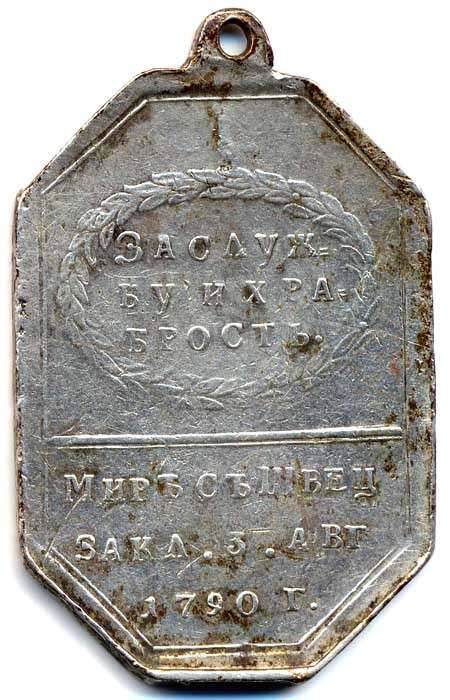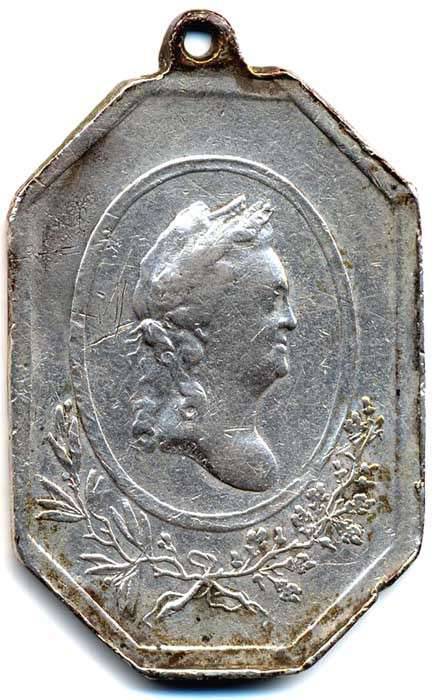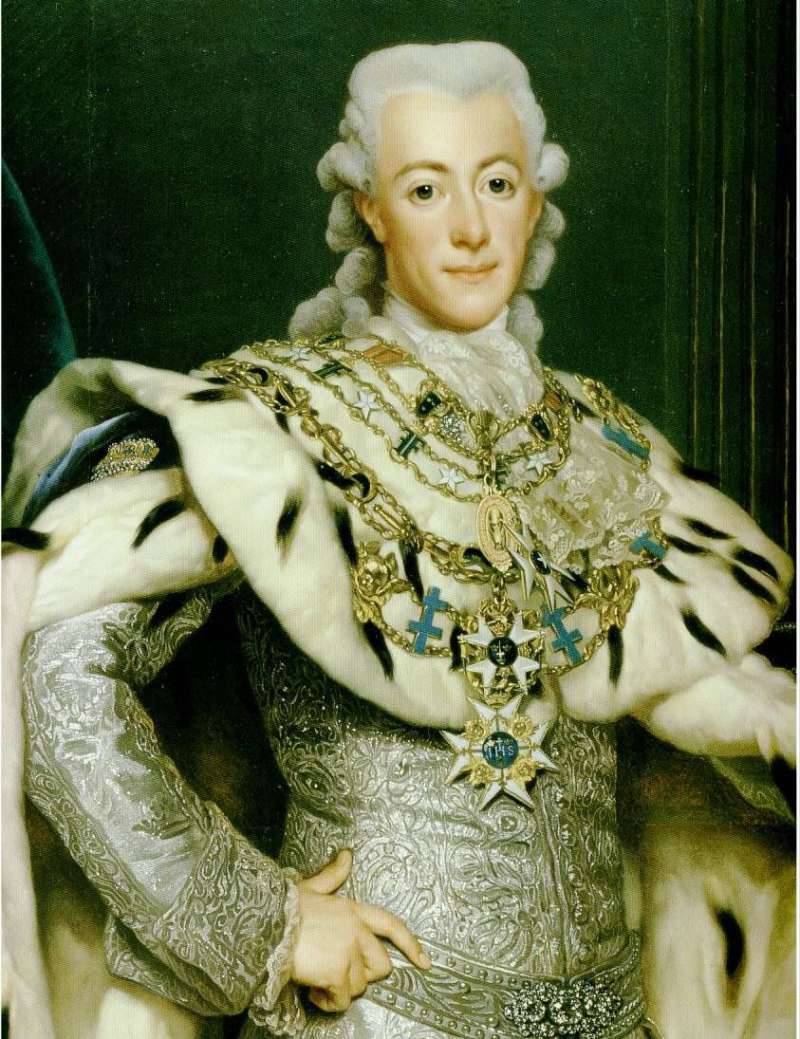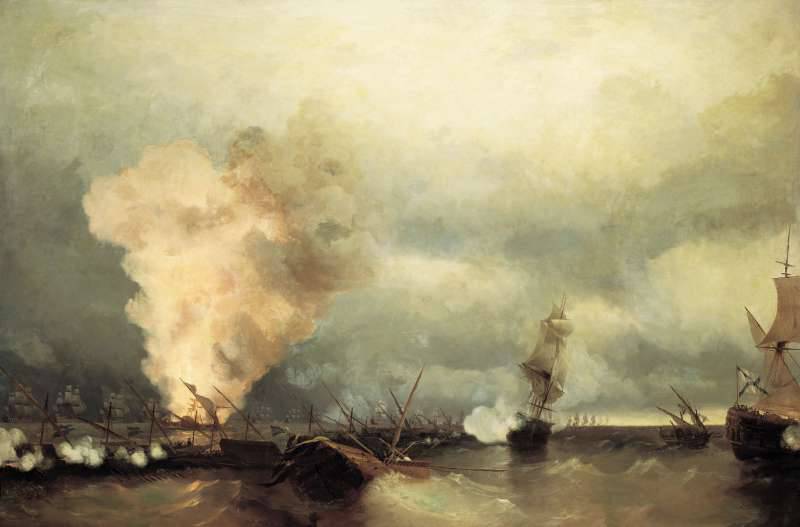For bravery on the waters of Finnish. medals of the Russian-Swedish war 1788 – 1790
War Wars War. More often than not, as was the case with the two world wars of the last century, the inevitable bloodshed is made by irreconcilable contradictions of a political, ideological, economic nature. But sometimes the people are forced to oppose against each other the despotic will of a single sovereign psychopath, who suddenly dreamed of playing “war-war” with the living, and not with the tin soldiers. That is how, without the slightest basis, the Russian-Swedish war of 1788 – 1790 began.
“There is nothing more dangerous than the imagination of a scoundrel, not restrained by a bridle and not endangered by a continuous view of the possibility of punishment on the body. Once excited, it throws off all the yoke of reality and begins to draw the most ambitious enterprises to its owner. ”
These words of our great satirist Mikhail Saltykov-Shchedrin may not be fully applicable to the Swedish king Gustav III, but it cannot be said that they are not applicable at all.
Strange was the type, as with obvious all, and with carefully deviated from prying eyes deviations. Inveterate theater, the author of his own compositions, this king loved to repeat the famous Shakespearean phrase that the world, they say, is theater, and the people in it are actors (unfortunately, there was no particularly insightful among those who heard it from the royal lips).
He married to continue the race, but to the fair sex was not too located, preferring to surround himself with pretty favorites, and in a warm men's company made his pilgrimage to the cultural capital of Europe. Harmless at first glance. Well, freemasonry slowly, who did not happen. To Russian Empress Catherine II, he was a cousin, was on the grounds of her caressed and slightly fought for pranks.
But this is all, so to speak, star dust. Secretly Gustav cherished ideas far from reality. About that, for example, so that, using kinship and Masonic conciliation with the Russian crown prince Paul, sometime in the future almost all of the Baltic States be asked of him.
The eccentricities of “their” king in St. Petersburg were so overlooked that they didn’t pay special attention to how famously from an almost formal ruler, as he was at first, he turned into an actual ruler, while steadily stepping on the pro-Russian party’s throat.
Gustav’s insidious assurances of perfect reverence and devotion to the Russian court were so blindly believed that in the 1787 year, when the war with Turkey finally began to mature, all the forces of the empire were quietly directed to the south. In Finland, however, only weak garrisons remained in the fortresses. True, there was still a Baltic fleet, very significant in number. Although, unlike the Swedish, many Russian ships were of old construction. They were no longer suitable even for going out to sea. In addition, the fleet was preparing to repeat the Archipelago expedition - around Europe in the Mediterranean, to strike the rear of the Turks; The Russian avant-garde was already in Denmark, controlling the Strait of Zunda, just in case.
Another couple of months - and St. Petersburg could be taken barehanded. But the crowned stage lover was anxious to play the unwritten in the great play called “History”The mise en scene of his own composition - to enter the Senate Square on a white horse, to cast off the Bronze Horseman from the Thunder-stone and to celebrate magnificently the victory gained by insidiousness in Peterhof. All this he has already rashly promised his court ladies and, of course, gentlemen. Regardless of the anachronism, Gustav ordered even to forge his long-obsolete knight's armor.
Deciding that the moment for a stab in the back came, at the end of June 1788, the king turned to the royal cousin with ridiculous demands that included, among other things, the Russian cleansing of Finland, the disarmament of the Baltic Fleet and the return of the Crimea to the Turks (the importance of this peninsula for Russia was already understood in Europe any idiot).
Immediately with great haste, hostilities began: the 36-thousandth Swedish army under the command of the king-dreamer crossed the border and laid siege to Nyslott. Large forces moved to St. Petersburg by sea.
It is easy to imagine the panic that engulfed Catherine’s court. The war with Sweden appeared like a bolt from the blue. Urgently made a recruitment. But what ?! The Cossack regiment, for example, was formed from coachmen. Thousands of troops assembled and armed 14 in some way and sent north under the command of a poorly capable and for this reason utterly cautious general - Valentin Musin-Pushkin (in one recent Internet article we read, he was amused and mixed up with another Musin-Pushkin, Alexey Ivanovich, the chief procurator of the Synod and the president of the Academy of Arts, in whose Moscow library they allegedly kept and “successfully” burned in the fire of the twelfth year, the manuscript of the notorious “Lay of Igor”, which probabilities, literary mystification of the XVIII century).

But directly at the Finnish theater, the action organized by the king did not make any special impression on the Russians. The example of besieged Nashlot is characteristic in this sense. Approaching the fortress, Gustav demanded that he be let in immediately. As the old saying goes, trouble came - open the gate. The commandant of Nashlota, a veteran of the last Russian-Turkish war of seconds, Major Kuzmin, responded to an eccentric stranger like this: “While serving the fatherland, I had the misfortune to lose my right hand; the gates of the fortress are too heavy for me to open with one hand; Your Majesty is younger than me, you have two hands and therefore try to open them yourself. ” The vain assault that followed this truly noble answer did not give Gustav anything but an excuse for even more annoyance.
Russian ships at that time were scattered across the Baltic, but here luck was also with us: ruled over the Baltic fleet Chesma's hero Samuel Greig, admiral decisive and courageous. A meeting in the Gulf of Finland with the Swedes on their way to Petersburg took place on July 6 (17) near the island of Gogland. With a comparable number of battleships, the Russian teams were not yet fully prepared, so I had to retrain directly in battle. The tactically unresolved, Hogland battle, of course, was a major strategic victory for the Russians: the surprise effect did not work, and the Swedes rushed to Sveaborg to lick their wounds, hoping that their enemy would do the same in his Kronstadt.

It was not there. Having sent back only a few of the ships most damaged in the battle of Gogland, Greig quickly corrected the damage to the rest and unexpectedly appeared for the Swedes at Sveaborg, where he locked up unlucky enemies. The Sveaborg blockade, quite possibly, could decide the outcome of the war, as the Russians, completely controlling the sea lanes, cut off a convenient sea supply for the royal army - the Swedes had to use the long roundabout to supply their troops.
In the army, as in the homeland, discontent with the unpopular war grew. In addition, on the other side of Sweden, Denmark was now threatened.
However, declaring war, the Danes, under pressure from England and Prussia, refrained from active actions. Meanwhile, the Russian fleet suffered a heavy loss: Graig died of a cold and was the soul of an offensive strategy. Admiral Vasily Chichagov, who replaced him, preferred caution to decisiveness. But even before taking office, the Russian ships stopped the blockade of Sveaborg and left to spend the winter at their bases in Kronstadt and Revel.
In the spring of the next, 1789, the Russian Copenhagen squadron, which did not manifest itself in any particular way, set off to join up with the main forces of the fleet sent to meet it. The Swedes, wanting to intercept and defeat the Baltic Fleet in parts, went to sea and 15 (26) July unsuccessfully fought with Chichagov near the island of Öland. There were few casualties on our side, but one of the best sailors, captain Gregory Mulovsky, was killed, preparing to embark on the first Russian round-the-world voyage, subsequently committed by Ivan Krusenstern.
The fighting continued in Finland, especially serious ones - off the coast, where the rowing fleets came together. The 13 (24) of August Russian galleys, which were just built in large numbers, with inexperienced carriages, penetrated from both sides into the Rochensalmsky raid, where they hid, blocking the flooded ships with the only accessible passage, the Swedes under the command of Admiral and theorist of the military art Karl Ehrensverd.
While Major General Ivan Balle's detachment from the south distracted the main forces of the enemy, from the north special teams of sailors and officers for several hours manually cut the passage for gallery Yuli Litta, the future chief chamberlain and member of the Council of State, and at that time - just entered the Russian service 26-year-old Maltese knight, attracted to Russia not just by ambition, but also by romantic feelings for the widow of the Russian envoy in Naples, Countess Catherine Skavronskaya.
The victory in both cases (we mean the marriage to Skavronskaya) was complete for Litta. The Russians' own losses amounted to two ships against thirty-nine from the Swedes, including the flagship admiral-theorist.
The commander in chief in this matter was the already known to us the winner of the Turks near Ochakov, the “paladin of Europe” Prince Carl Nassau-Siegen. He quarreled with his patron Grigori Potemkin and very much decided to go on another adventurous journey to Khiva and India, however, to everyone’s satisfaction, he allowed himself to be persuaded to stay with departure, due to which, as detailed in the Empress’s decree, “... admiral and four more ships, large ships, one galley and a cutter, many headquarters and chief officers and more than a thousand people of the lower ranks went to the winners.
The remainder of the Swedish fleet after suffering great damage and destruction after the burning of all its transport ships turned into a run and, being pursued, was driven to the mouth of the River Kyumen. ”
The brave admiral received for his victory the highest order of Andrey Pervozvanny in Russia and the gold studded with diamonds, a sword, his officers received orders and orders (in particular, the lucky Litta was awarded the "St. George" of the III degree, and Balle - "St. Anna" of the I degree). Sailors of the naval crews and soldiers-paratroopers received silver medals on the St. George ribbon of the same type with the medal "For bravery on the waters of Ochakovsky" (same master - Timofey Ivanov), only, of course, with a different inscription on the reverse:
"FOR - BRAVE - FOR WATER - FINNISH - AUGUST 13 - 1789 OF THE YEAR".
A new victory followed the rochesalmskaya one - a small one, however, also marked by an award medal. Nassau-Siegen with the soldiers of the Semyonovskiy regiment under the cover of night captured the Swedish battery on the coast, which prevented the landing of troops. To reward the Semyonovs, it was minted in a small number of copies and therefore the silver medal “For the taking of the Swedish battery” at the Kyumen River with the three-line inscription on the reverse is extremely rare today:
"FOR - BRAVE - ST."
Wore her guards, like the previous one, on the St. George ribbon.
The 1790 campaign of the year began for health, and ended for the rest. First - 2 (13) of May - the Swedes attacked the squadron of Chichagov standing in Revel. It’s so unfortunate that, having lost two ships and not causing any damage to the enemy, they were forced to retreat in disgrace.
After this defeat, the Swedish squadron under the command of the king's brother, the Duke Karl Südermanladsky, came to life for ten days, and then went to St. Petersburg in a faint hope of inflicting another unexpected blow on the Russians.
The Swedes met the Kronstadt squadron of Vice Admiral Alexander von Cruz against Krasnaya Gorka, giving the enemy a number of battleships (17 against 22) and much more with artillery power. 23 – 24 of May (3 – 4 of June) a two-day Krasnogorsk battle took place, the cannonade of which was heard in St. Petersburg and its environs, frightening the most impressionable characters like Count Alexander Bezborodko, who deigned to even cry for fear.
However, there was no reason for serious concern: the Swedes fired, fired, and then, warned about the approach of the Chichagov Revel squadron, retired to Vyborg to join up with the rest of Gustav’s forces pressed off the coast.
And they fell into the trap again. And much more serious than Sveaborg, because now the time of year favored a complete and final blockade. However, the desperate attempt of a breakthrough, caused by the last extreme, ended in success for the Swedes: 22 June, at exactly four o'clock (22-th, of course, in the old style, in the new - 3 of July), the Swedish combined fleet - about two hundred sailboats and galleys with 14 thousand infantrymen on board, he moved along the coast to the Russian line and, having lost six battleships, four frigates, a lot of trivialities and about half of the personnel, fled, again using Chichagov's indecision.
The fate that gave the Russians almost one hundred percent chance of winning the war, now turned offendedly against them. 28 June (9 July), on the anniversary of the coming to power of Empress Catherine, fate presented her with a bitter pill instead of a gift: while trying to repeat last year’s success in Rochensalm, she suffered a catastrophe in completely unsuitable weather and without prior preparation of the galley flotilla of Nassau-Siegen.
Galleys, rowing frigates and shebeks, reflected by the powerful fire of the enemy, collided with each other during the retreat and overturned. From 64, the lost 22 rowing ships were taken by the enemy as trophies. More than seven thousand soldiers and sailors were killed, wounded and captured. Shocked, barely escaped, Nessau-Siegen sent the empress his awards — orders and a golden sword.
Although, no matter how justly the Swedes were proud of this victory, one should not ignore the fact that it only miraculously saved Sweden at the last moment, which was close to its head from complete defeat. The international situation immediately demanded a speedy reconciliation, because in the Black Sea region it was about the speedy defeat of Turkey, after which the victorious Russian Suvorov army would have to fall upon Gustav’s patrimonial patrimony with all its excessive weight.
The best psychological moment for the Swedes to negotiate peace cannot be imagined. Almost immediately - 3 (14) of August - the indefinite Wereli Treaty was concluded, which preserved the pre-war status quo.
Nassau-Siegen, by the way, left all his previous awards. “One failure,” Catherine wrote graciously to him, “cannot destroy from my memory that you were the winner of my enemies seven times in the south and in the north.” However, Admiral’s reputation tarnished in every sense could not be restored.
Two years later, he retired from the service, traveled a little more, returned to Russia and here, finally settling in his Ukrainian estate, engaged in agriculture.
In connection with the end of the war, orders and ranks were distributed to many officers, and soldiers and sailors received an unusual octagonal silver medal (medalist - Karl Leberecht), on the obverse of which, in an oval frame, the profile of Catherine II in a laurel wreath, under the frame - laurel and oak branches tied with a ribbon. On the reverse, in a laurel wreath, there is an inscription in three lines:
"FOR THE SERVICE - BU AND THE TEMPLE - THE GATHER", and under the edge: "MIR SCHVETS. - CLOS. 3 AUG. - 1790.
The decree of the Empress of September 8 said: "... Praising the very brave deeds and tireless work of the land Guards, Russian field and naval forces, so many and different packs famous and probable to Her Imperial Majesty and homeland who overcame all difficulties, Her Imperial Majesty in memory of Her Imperial Majesty and homeland. that of their service he commands all the troops who were against the enemy in action, to distribute medals on a red ribbon with black stripes for each person. ”
“Red ribbon with black stripes” is nothing more than the ribbon of the Order of St. Vladimir, first issued for wearing a medal on it.
In addition to the award, they also minted a commemorative medal (medalist - Timofey Ivanov) with an arc inscription on the reverse side: “Neighboring and eternal”, and below, under the edge: “Mir Sweden, 3 of August 1790 of the year”.
So, the bloodletting ended in nothing. This was perhaps the most stunning result for the Swedish king's adventure. Now he could again indulge in peaceful theatrical and other pleasures. A year and a half later, during one of them - a masquerade ball at the Royal Swedish Opera - Gustav was mortally shot in the back.
Here, as they say, what you sow, you will reap.


Information